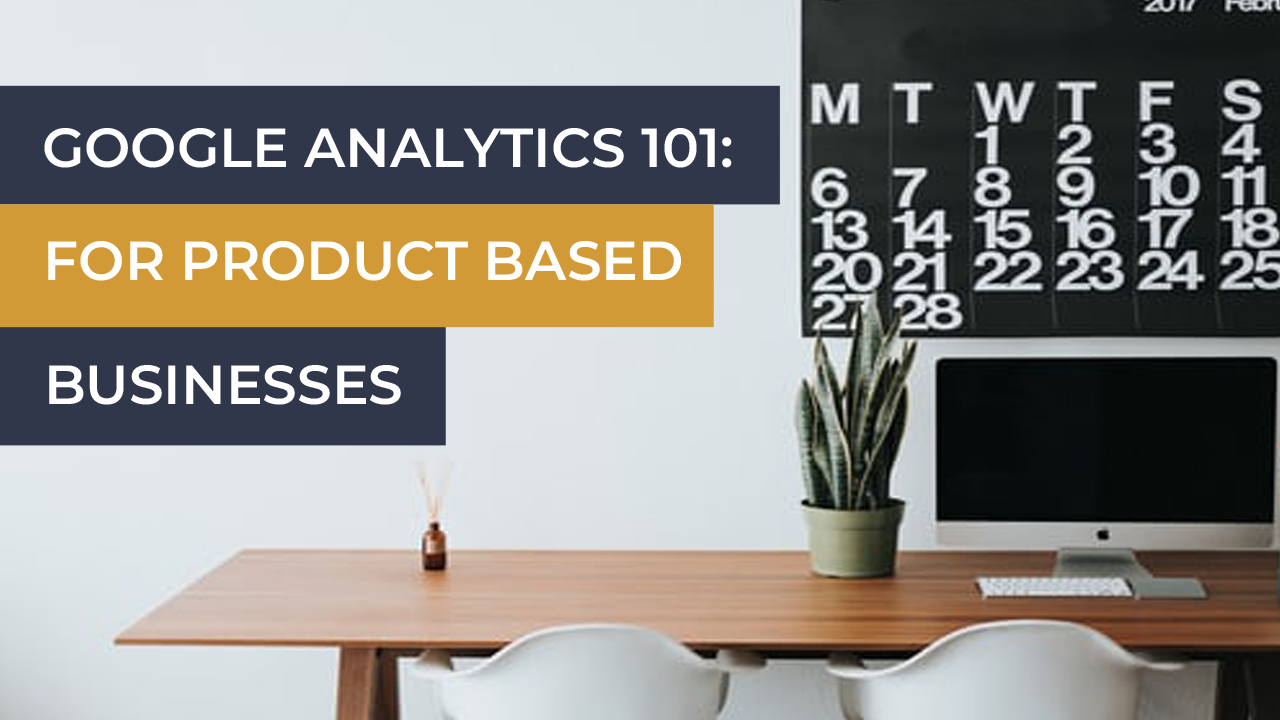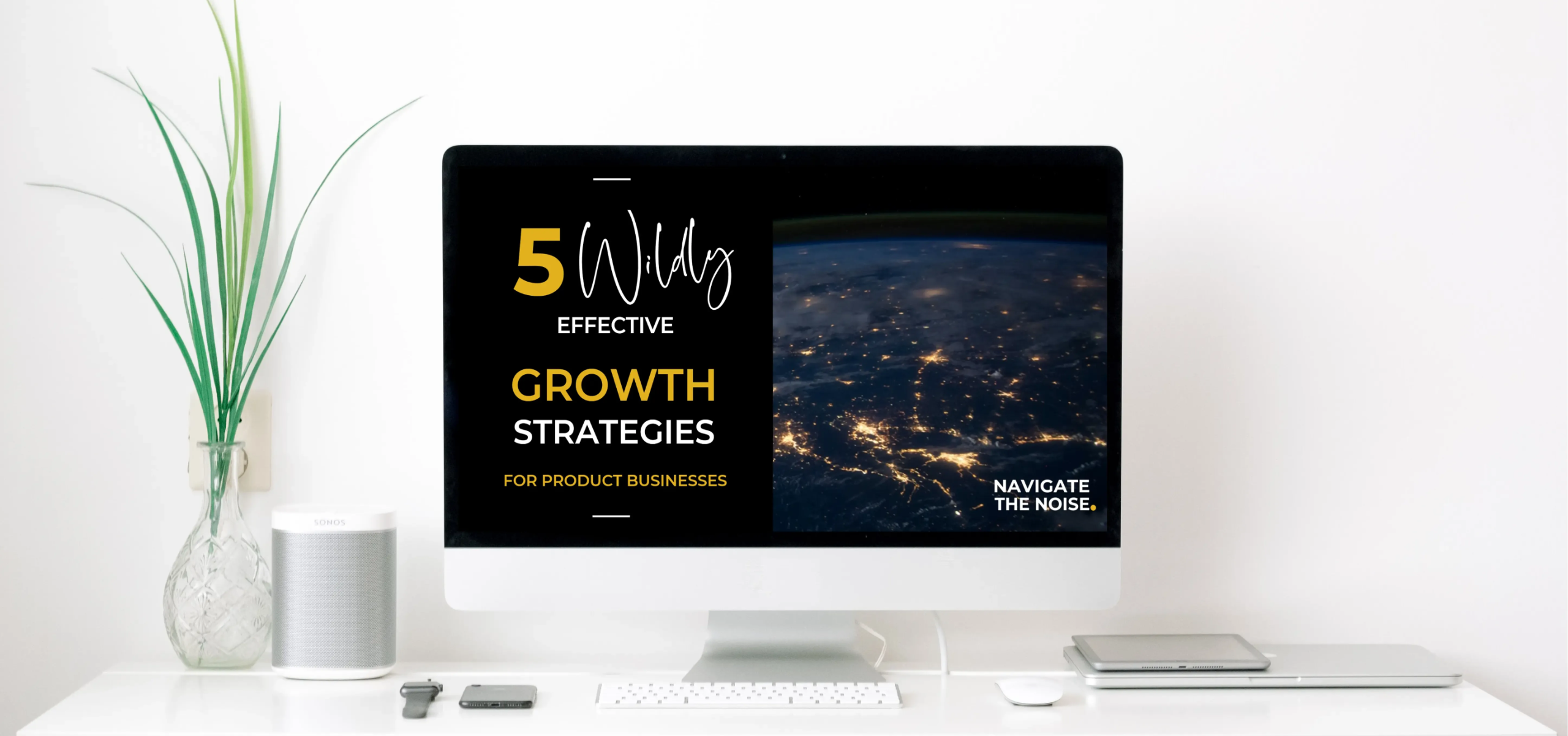Google Analytics 101: For Product Based Businesses

Ever wondered how your customers have found your website or what they've been looking at whilst browsing your online store?
Although having a website is essential for all product-based businesses, the initial website design is only the start of the journey. The real work to grow your business starts when you begin understanding your customers experience in your store.
Grab All The Insight You Can Get With Both Hands
For any product-based business owner, you will want to be able to take full advantage of the business and audience growth opportunities in front of you.
To do this you must get deeper insight into how your customers are behaving as they travel through your website, where they come from in the first place and what their experience truly is with your products and service as they approach and hopefully complete checkout.
Fortunately, gaining access to this type of consumer behavior insight doesn’t have to be an expensive endeavour as Google offers a free tool that can help with different aspects of monitoring the performance of a website. It's called Google Analytics - and if you are not making full use of this tool in your product based business, you are 100% missing out.
What Is Google Analytics?
Google Analytics is a free-to-use digital analytics service offered by Google that delivers information about the visitors and interactions of a website.
Why Does a Product Based Business Need Google Analytics?
Knowing how your customers interact with your products and view your ecommerce store means that you can tailor your marketing and user experience accordingly.
Google Analytics offers data that can be used to highlight popular pages, as well as pages that may require some attention or places where customers are getting stuck and leaving (bouncing) from your website.
For example, if you had a physical store, you would see very clearly if there was a great big pit in the floor that your customers kept falling into, which kept them from reaching the checkout till! In an online environment, it's not always as easy to see those pits, and so regularly reviewing your website data will help you discover if there are problems you don't know about that need fixing.
What Can I Learn From The Data?
You can learn all sorts of things about your business that you didn't know before - from website visitor numbers, to demographics (male, female, age ranges, city locations) and how they found you e.g. via facebook, by doing a google search, from your facebook ads to even which type of device they were using when they were on your website (mobile or desktop).
I particularly love looking at the data on user journeys, which pages they spent time on, how long they viewed a page for (dwell time) and top exit pages to discover what's making them leave. There are deep, deep layers of data for you to browse and dive into.
As well as allowing your ecommerce business to tailor future marketing efforts, Google analytics can also offer information about past marketing campaigns and the number of website visitors who came to the site via an email you'd sent out.
Google analytics can also integrate with other optimisation tools and can help you;
See Where Your Rank in Search Engine Results: Search engine results is an essential piece of information for online businesses, as it allows it to see where it currently stands and what improvement can be made to move forward.
Learn About Keywords: This feature allows an online business to recognise what keywords are bringing the most traffic.
Decide on Which Social Media Platform to Advertise: Google Analytics offers segments that show the most active social profiles, allowing an online business to tailor its marketing efforts accordingly.
Discover How Compatible You Are with Online Users: A website needs to be compatible with several browsers as well as being mobile-optimised, and Google Analytics can show what browser is being used as well as the device.
How to Install Google Analytics
You will need to first set up a Google Analytics account for your product-based business and associate it with your website URL.
From here, a tracking code will be generated for you by Google, which is then inserted into the <head> section of your website. Once installed, your can navigate the Google Analytics platform to obtain information about your website use and traffic. All vital data if you are serious about growing your business.
Five Things to Know About Google Analytics
Although there is a lot of value to Google Analytics, especially given it’s free, like any platform it comes with limitations.
Although each business owner will yield different results while using Google Analytics, the following is an overview of five key elements of Google Analytics you should focus on when first starting with this tool.
- You Can Set Up Custom Dashboards: You can customise the summary view dashboards to your specific business needs and data interests. This is done by signing into Google Analytics, opening reports and then clicking ‘Customisation.’
- Creation of Custom Reports is Effortless: Individual reports can be created in Flat Table, Explorer, Map Overlay and Funnel and can be defined using different dimensions. This Is carried out within the ‘Customisation’ section of the ‘Reports’ tab.
- Customer Insight Is a Few Clicks Away: Customer Insight allows you to view pages with high bounce rates and top exit pages, as well as offering details relating to the click-through rates of conversion-related actions.
- You Can Track the Customer Journey and See What Works Best: Google Analytics allows you to gain more insight on the customer journey, including popular posts and the building if sales funnels that showcase the journey made before a purchase was made.
- Determine Your Key Demographics: As well as being able to offer in-depth detail about devices used to visit the website, Google Analytics can also deliver locations of where most of your traffic derives from. The locations of some of your website visitors may well surprise you!
Where Can I Find Out More?
Although Google Analytics is easy to use once you become familiar with the platform, those starting for the first time may want to find out more about the features and usability of the platform.
The following Google video gives a complete overview of the platform and is designed for beginners who are new to Google Analytics tool. It includes the registration process as well as some pointers on how to navigate Google Analytics.
Make It Happen In Your Business
The very fact that Google Analytics is free offers enough value alone, but many product based business owners I speak to are surprised to find just how much information they can obtain from Google Analytics.
It can prove to be an essential market research and performance management tool when used in conjunction with other platforms and should form part of your monthly performance reporting suite.
Next Steps
- If you haven't already set up a Google Analytics account for your product based business and install the tracking code on your website.
- Regularly review the data which comes through this tool and use the dashboard feature to create a monthly report data set you can use to manage the performance of your business.
- As a product-based business make sure to switch on your ecommerce conversion tracking within Google Analytics so that you can get deep product sales reporting and demographic data on your audience.
Grab Your Free Guide:
5 Wildly Effective Growth Strategies
This guide will walk you through our proven steps to get your product selling, creating a global footprint for your brand.
We hate SPAM. We will never sell your information, for any reason. You can unsubscribe at any time.






